Article Search
Benjamin Libet und die Willensfreiheit
Benjamin Libet and free will - How platonic is our modern picture of the human being?
In 1982 and 1983, Libet et al. published experiments on a group of healthy subjects who were required, without external cause, to make simple hand movements while simultaneous measurements were made of electrophysical activity of the brain with the… Read More
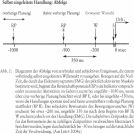
Aspekte einer natürlichen Ordnung von Pflanzensubstanzen nach ihren Bildeprozessen
Aspects of a natural classification of plant substances according to their formative processes
The question of the classification of plant primary and secondary substances is repeatedly raised and sometimes controversial. In the work presented here this question is investigated in relation to two ways. On the one hand the physical… Read More

Goetheanismus als»Erdung«der Anthroposophie - Die Bedeutung der Sinneswahrnehmung für die goetheanistische und anthroposophische Erkenntnismethode
Goetheanism as a grounding’ of anthroposophy - The meaning of sense perception for Goetheanistic and anthroposophical methods of knowledge
Consciously conducted and controlled Goethean study takes place by the following steps, characterised approximately:
1. Perception is fully focused on the object, and carries out with it all… Read More

Miniaturen am Wege - zwei Süßwasser-Rotalgen, zwei Ritterfalter und zwei Lurche im Vergleich
Miniatures on the path. Two red algae in freshwater, two swallowtail butterflies, and two amphibians in comparison
Both native freshwater red algae, Batrac/oospermum and Lemanea, have been introduced. Their morphology in space and time are compared. A report on breeding both native swallowtail butterfly species - Ipbiclides podalirius… Read More
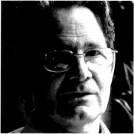
Entwicklungsmorphologie eine typologische Betrachtung zur Formbildung
Evolutionary morphology a typological study of the development of form
The development of the inflorescence of Digitale lutea is described in detail from the formation of the primordium on the apex to the opening of the mature inflorescence and is documented by drawings of illuminated, complete preparations of the different… Read More

Der morgentypische und der abendtypische Mensch im Nacht-Tag-Rhythmus
Morningnes and eveningnes in the night-day-rhythms
The following can be concluded from a study initiated by Gunther Hildebrandt, from further observations and from the literature:
Human subjects are generally inclz'ned towards being at their greatest productim'ty in the morning and in the afternoon towards their best 1nood. This… Read More
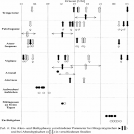
Entwurf zu einer Biologie der Freiheit am Beispiel der Singvögel Zur Differenzierung des Reviergesanges
An outline for a biology of freedom using songbirds as an example - Concerning the differentiation of the territorial song
The territory defended by songbirds is much more an acoustic territory than a foraging one. Therefore singing outside a territory more often leads to conflict than does searching for food there. The great… Read More
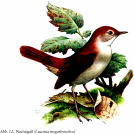
Substanz-Veränderung durch Strömungsprozesse
Substance changes by flow processes
The authors discuss this subject that was introduced by R. Steiner in 1920 for processing a pharmaceutical preparation from Viscum album.
In Part 1, the origin of the need for flow processing of mistletoe preparations is reported insofar as it can be traced back to lectures and recorded… Read More
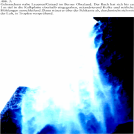
Zur Autonomieentstehung in der Evolution - Eine Übersicht
The generation of autonomy in evolution - a survey
The hypothesis is advanced that major evolutionary innovations are characterized by an increase of organismal autonomy in the sense of an emancipation from the environment. After a brief overview of some new aspects of the question of macroevolutionary innovations from recent scientific… Read More
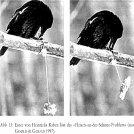
Mineralische Lumineszenz als Umkreis-Wirkung
Mineral luminescence as an expression of environment forces
By comparing luminescence phenornena of the inorganic and organic world a common motif becomes evident which can be described by the quality of ‘environment’:
Biolnminescence of animals, with its species-specific rhythms, especially characterizes evolutionarily less… Read More

